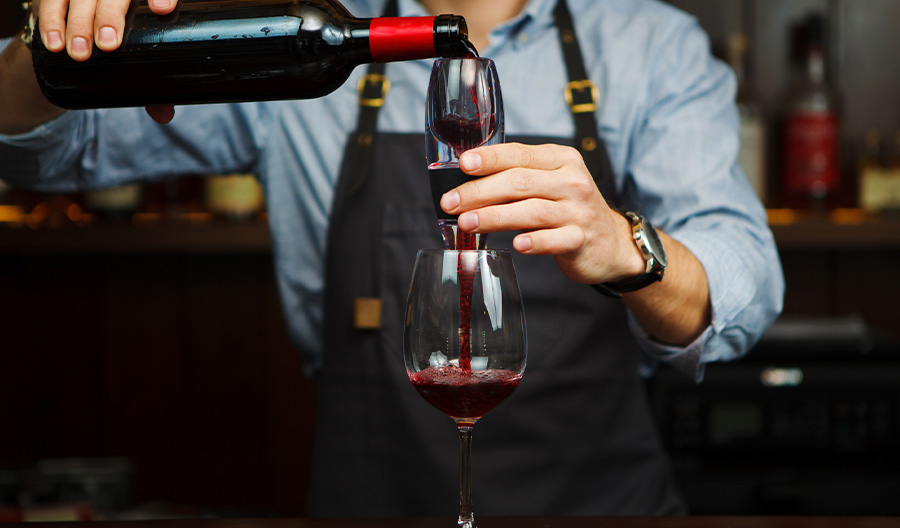Wine needs to breathe to reach its full potential. When wine is aerated, or exposed to oxygen, its aromas and flavors are brought to the forefront and are more easily appreciated. Two tools that facilitate this process are aerators and decanters. Knowing which one to use and when to use it can breathe new life into your customers’ wine-drinking experience.
Aerators Vs. Decanters - What's the Difference?
Aerators are specialized spouts that are handheld or attached to the mouth of a bottle. As wine is poured through the spout, more of its surface area is able to interact with the air. Other types of aerators actively add or pump air into the wine as it’s being poured.
Decanters, on the other hand, are glass serving vessels that wine is poured into rather than through. The wide, almost-bell-shaped bottom of a decanter allows more contact with the air than if the wine remained in its original bottle. Most wines can benefit from aeration, but which method is better?
The Best Way to Aerate Wine
The best aeration method depends on the type of wine being poured. Aerators work faster than decanters and are best for young reds or tannin-forward wines which benefit from the air softening the bitterness of the tannins. This mellowing effect allows a wine’s fruit notes and acidity to shine.
Decanters are better for full-bodied, delicate, or older wines. In aged wines, sediment is more likely to accumulate at the bottom of the bottle. In addition to allowing it to breathe, carefully pouring wine into a decanter helps keep sediment out of the wine glass. Some wines that benefit from decanting are full-bodied whites, vintage ports, and reds like Cabernet Sauvignon, Bordeaux, and Burgundy.
Allowing wine to rest in a decanter is also a great way to warm it to its ideal drinking temperature. And for young wines that need lots of oxygen because they haven’t had time to fully develop their complexity, a combination of both methods can be used by pouring the wine through an aerator into the decanter.

Aeration Tools for At-Home Use
Aerator and decanter use isn’t limited to special occasions or fancy establishments. These tools allow customers to bring the full connoisseur experience to the comfort of their own homes. Offering a version (or a few) of each near the checkout counter is a great way to anticipate their needs and inspire greater wine exploration.
Aerators and decanters enhance wine tasting by maximizing flavor and adding a sense of luxury to the experience. While aeration can’t turn a bad wine into a good one, these techniques can help your customers get the most out of their wine.

